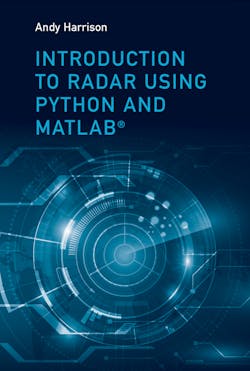Therefore, according to the author, it’s often convenient to categorize radar systems based on parameters like operating frequency band, type of waveform used, configuration, etc. To illustrate this, the chapter contains a table that depicts radar classification by operating frequency. It then describes typical radar waveforms, including continuous-wave (CW) and pulsed waveforms, as well as more complex types such as phase-coded waveforms. Another table lists common waveform types and their applications. In addition, various radar-system configurations are defined, including monostatic, quasi-monostatic, bistatic, and multistatic systems. Corresponding illustrations are also shown of bistatic and multistatic systems.
Chapter 1 concludes by discussing the book’s accompanying software. The tool suite, written in the Python programming language, includes a user-friendly graphical user interface (GUI) that updates plots and images automatically as the user changes parameters. Also included are scripts written in MATLAB that correspond to each of the Python scripts. The Python and MATLAB sets of code can be obtained from a GitHub repository.
The second chapter covers electromagnetic (EM) fields and waves. Of course, a discussion on EM fields and waves must include an overview of Maxwell’s equations—and that’s the case here. Among the additional topics touched on throughout the chapter include EM boundary conditions, wave equations and solutions, and plane waves. Subsequent chapters delve into topics like antenna systems, the radar range equation, radar receivers, target detection, radar cross section, and more.


